
................................................................................................................................................................................................................................................................................................................................................................................................................................................................................................................

Copyright © visitindia.org.in. All Rights Reserved.
Travelogues/Travel Logs of Roadtrips
Hit the road with the summary guides of our trips to various places in India. Any information feel free to drop a mail at info@visitindia.org.in


Get online driving directions, route guides, weekend planners, and customised itineries. Check out a few of our favorite user road trips, then start an adventure of your own.....Explore India by Road

Find us :-
Ujjain
Rumi's Tomb


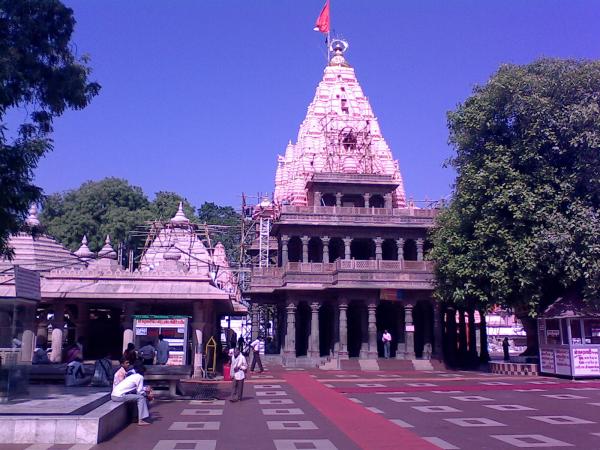
Image - wikimapia.org


- The ISKON temple is worth a visit
- The Jain temples here are Tapobhoomi, Hanumant baag, Avanti Parshwanath, Jai Singh Pura Atishay Kshetra
- The throne of Maharaja Vikramaditya, known as the "seat of judgment" (salabanjika throne) is located in the Rudra Sagar lake. There is a long story from the Puranas associated with the throne.
- The Sandipani Ashram is where Shri Krishna was educated with Balarama and Sudama from Maharshi Sandipani
- The temple of Maa Wagheshvari is known for its tallest idol of a goddess Wagheshwari and "Sinh (lion) - Dwar (gate)".
- The temple of Chintaman Ganesh is the biggest ancient temple of Lord Ganesha in Ujjain.
- Gopal mandir was built by Scindias, it was plunged by the muslim invaders. The temple is worth visiting still.
- Harsiddhi temple was built during Maratha period, Annapurna devi is worshipped here.
- Vedhshala observatory has an entry fee of Rs 5/- and is open form 8 to 5. The Greenwich mean time starts in Ujjain. Built by Maharaja Jai Singh, the sun dial in Ujjain is the one in use compared to Delhi, Varanasi, Mathura and Jaipur.

This place is situated 8kms from Ujjain out side its northern border. Kaliadah palace, as it is lost now in the symphonious solitude of the streams of Kshipra, flowing through tanks and channels with frolicsome twist and turns in the serene setting of nature, was once a majestic Sun temple. The Surya kund and the Brahma kund .People from nearby village hold their religions both in one of the tanks Brahma and Surya –kund even today .Remains of the old temple are seen scattered here and there throughout the area.
The flows of kshipra is divided in two part on the southern side. Kaliyadah palace was shaped in th the present from in the 16 century AD.by Nasiruddin khilji, the then Sultan of Malwa.The central dome of the palace is beautiful example of Persian architecture. Visit of Akbar and Jehangir to this palace are recorded in two Persian inscriptions found in the long corridor adjacent to the tank. The palace came under the control of Scindias during Maratha an inscription found in the palace complex says that it was constructed in 1458 AD during the reign of Mahmud Khilji of Malwa. One of Mahmud's later successors, Nasiruddin Khilji constructed tanks and waterways all around the palace to withstand the excruciating summer sun. The main durbar hall of the palace is crowned with a majestic dome, built in accordance with the Persian style of architecture. Two inscriptions in Persian were
found in one of the long corridors of the palace which record that the Mughal emperors Akbar and Jahangir visited Kaliadeh Palace.
The palace complex. suffered extensive damages during the war between the Marathas and the Pindaris in 1818. After the Pindaris were crushed, the palace remained uninhabited and neglected until Madhou Rao Scindia of Gwalior restored it to its former glory in 1920.
Mahakaleshwar temple
The presiding deity of time, Shiva, in all his splendour, reigns eternal in Ujjain. The temple of Mahakaleshwar, its shikhara soaring into the skies, an imposing façade against the skyline, evokes primordial awe and reverence with its majesty. The Mahakal dominates the life of the city and its people, even in the midst of the busy routine of modern preoccupations, and provides an unbreakable link with past traditions. One of the 12 Jyotirlingas in India, the lingam at the Mahakal is believed to be swayambhu (born of itself), deriving currents of power (Shakti) from within itself as against the other images and lingams, which are ritually established and invested with mantra-shakti.
The idol of Mahakaleshwar is known to be dakshinamurti, facing the South. This is a unique feature, upheld by tantric tradition to be found only in Mahakaleshwar among the 12 Jyotirlingas. The idol of Omkareshwar Shiva is consecrated in the sanctum above the Mahakal shrine. The images of Ganesh, Parvati and Karttikeya are installed in the west, north and east of the sanctum sanctorum. To the south is the image of Nandi. The idol of Nagchandreshwar on the third storey is open for darshan only on the day of Nagpanchami. On the day of Mahashivaratri, a huge fair is held near the temple, and worship goes on through the night.
The temple is located near a lake; it has five levels, one of, which is underground. The temple itself is located in a spacious courtyard surrounded by massive walls. The shikhara is adorned with sculptural finery. Brass lamps light the way to the underground sanctum. It is believed that prasada offered here to the deity can be re-offered unlike all other shrines. Visit mahakaleshwar.nic.in
In its hey day Ujjain was on a flourishing trade route with Mesapotamia and Egypt. The great poet Kalidasa is said to have written some of his works, including the epic Meghdoot, here at the court of Chandragupta II. Ujjain's final decline as a politically important centre dates to when the Scindia capital was moved to Gwalior in 1810.
Ujjain one of the holiest pilgrimage centres in India is 60 kms from Indore. There are frequent bus services plying from Indore to ujjain but not convenient for inter city sightseeing. Once a tourist reaches Ujjain it is best to hire a autorikshaw to have a tour of the temples. Ujjain is one of the seven sacred cities of the Hindus, and the Kumbh Mela religious festival is held there every 12 years on the banks of Shipra river.
The next kumbh comes in 2016 (April 22nd to May 21st) It is also home to Mahakaleshwar Jyotirlinga, one of the twelve Jyotirlinga shrines to the god Shiva and is also the place where Lord Krishna got education with Balarama and Sudama from Maharshi Sandipani. The Tropic of Cancer also passes through Ujjain.
Mahakaleshwar temple
In the outskirt of Ujjain on way to Garhkalika Rumi's tomb is situated in the left side of a hillock. This place is Known as the tomb of Maulana Rumi. According to tradition, Maulana Rumi was a Sufi Saint. The architecture of this tomb is hexagonal. This monument is five to six hundred Years old. Some speak of Rumi as a Turkis trader while other take him to a Commander of some army unit. Indian Antiquary, Volume 6 of October 1875, has the biography and precepts of the great Sufi Saint Jelal–a-Din-Rumi .This monument appears to have been constructed in his sacred memory.
Less Explored
Ram Janardan Temple
Ram-Janardan Temple out skirt of Ujjain city Ram –Janardan temple are situated these temple are peculiar of Malwa area. Idol of Ram, Lakshaman and Sita in the Ram Temple and that of Janardan th temple belong to the 17 century AD. Both the temples present an attractive look from the point of view of their structure art .these temples were th constructed by Mirza Raja JaiSingh in the 17
century AD. The boundary wall, tank were added th later in Maratha period in the 18 century AD. Beautiful examples of Maratha Paintings are seen on the walls of both the temples. Besides the attractive scenes from the lives of Ram &Krishna, the paintings of Bodalya Bua, Maharoy and Sant Tukoba. are quite impressive. Certain old images can be seen installed in both the temples as well as near the tank opposite Janardan Temple which are very important from the point of view of sculpture.
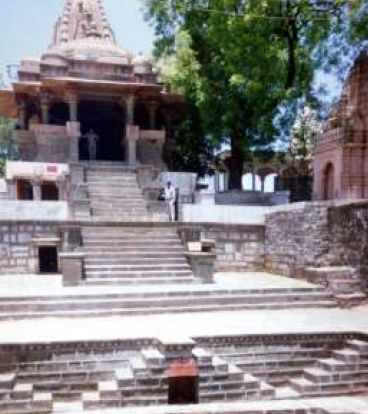
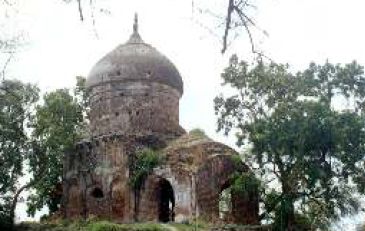

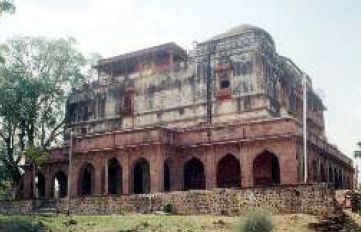
Cenotaph of Vir Durgadas
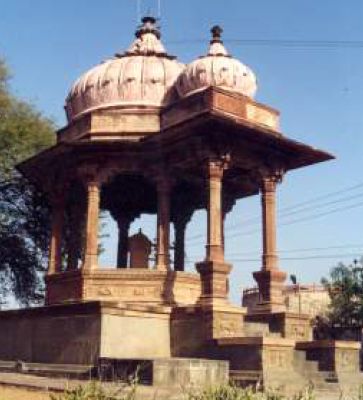
In the outskirt of Ujjain on way to Garhkalika Rumi's tomb is situated in the left side of a hillock. This place is Known as the tomb of Maulana Rumi. According to tradition, Maulana Rumi was a Sufi Saint. The architecture of this tomb is hexagonal. This monument is five to six hundred Years old. Some speak of Rumi as a Turkis trader while other take him to a Commander of some army unit. Indian Antiquary, Volume 6 of October 1875, has the biography and precepts of the great Sufi Saint Jelal–a-Din-Rumi .This monument appears to have been constructed in his sacred memory.
